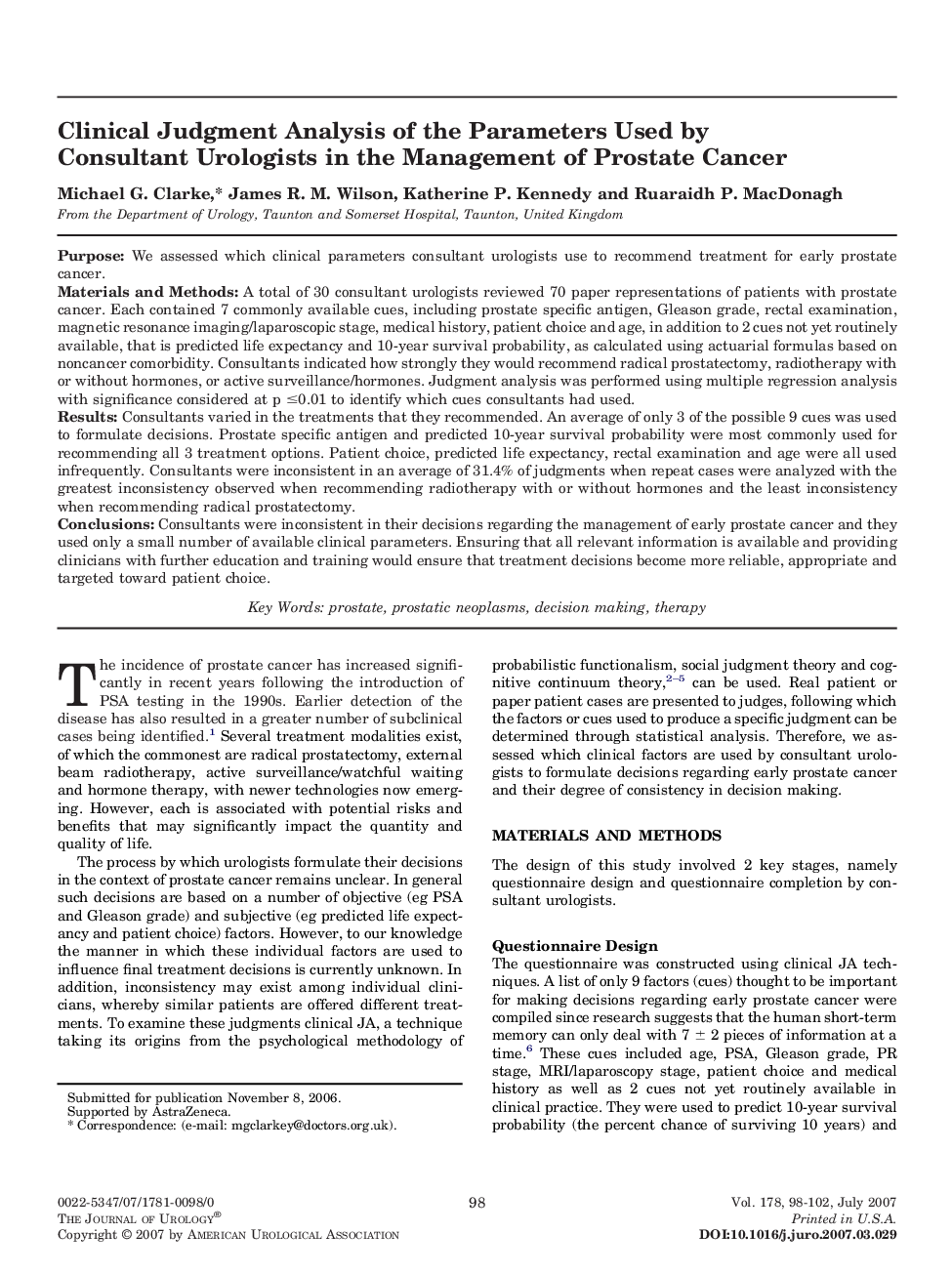| Article ID | Journal | Published Year | Pages | File Type |
|---|---|---|---|---|
| 3878496 | The Journal of Urology | 2007 | 5 Pages |
PurposeWe assessed which clinical parameters consultant urologists use to recommend treatment for early prostate cancer.Materials and MethodsA total of 30 consultant urologists reviewed 70 paper representations of patients with prostate cancer. Each contained 7 commonly available cues, including prostate specific antigen, Gleason grade, rectal examination, magnetic resonance imaging/laparoscopic stage, medical history, patient choice and age, in addition to 2 cues not yet routinely available, that is predicted life expectancy and 10-year survival probability, as calculated using actuarial formulas based on noncancer comorbidity. Consultants indicated how strongly they would recommend radical prostatectomy, radiotherapy with or without hormones, or active surveillance/hormones. Judgment analysis was performed using multiple regression analysis with significance considered at p ≤0.01 to identify which cues consultants had used.ResultsConsultants varied in the treatments that they recommended. An average of only 3 of the possible 9 cues was used to formulate decisions. Prostate specific antigen and predicted 10-year survival probability were most commonly used for recommending all 3 treatment options. Patient choice, predicted life expectancy, rectal examination and age were all used infrequently. Consultants were inconsistent in an average of 31.4% of judgments when repeat cases were analyzed with the greatest inconsistency observed when recommending radiotherapy with or without hormones and the least inconsistency when recommending radical prostatectomy.ConclusionsConsultants were inconsistent in their decisions regarding the management of early prostate cancer and they used only a small number of available clinical parameters. Ensuring that all relevant information is available and providing clinicians with further education and training would ensure that treatment decisions become more reliable, appropriate and targeted toward patient choice.
